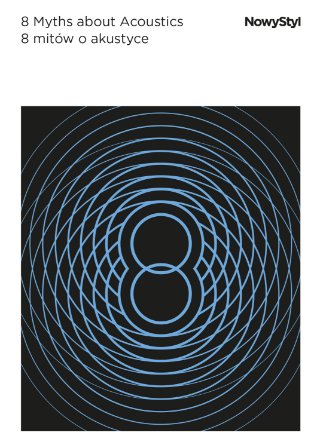A Word About Acoustics Part 3: Propagation of sound in a closed space
When speaking of workplace comfort, we often remind you how important office acoustics really is. But what is it exactly? What do we mean by saying the office acoustics is good or poor?
Acoustics is closely related to the propagation of sound in a closed space. First the source of sound, for example, a speaking human, generates a sound wave. When the wave reaches a surface and hits the floor, walls, or ceiling, some of it is reflected, some is absorbed, and some travels through the barrier. In a closed space, many sound waves often collide and overlap. With many sound waves doing their thing, the sound energy within a closed space is accumulated and dispersed. And this is acoustics.
Reverberation time
When the source of the sound is rapidly disconnected, the sound won’t just disappear. It will reverberate for some time and die away after a while. The pace of this absorption depends on the distribution and amount of the absorbing material. The time needed for the sound to be absorbed is known as reverberation time. This parameter is defined as the time required for a sound, when suddenly interrupted, to die away to a level 60 decibels below the original sound.
The optimum reverberation time will vary, depending on what the room will be used for. Apart from reverberation time, we have several other parameters to consider. When aiming at optimum acoustics, we want the sound to be pleasant and functional. This means the sound needs to perform its intended function: it could be speech or music, for example. Objective data about acoustics is derived from parameters. They are always measured against specific norms.
To define the parameters, you can use measurements or calculations. And when you already know your numbers, you can come up with a relevant strategy. Acoustic experts at Nowy Styl have the necessary knowledge and tools. Our qualified specialists use advanced equipment to help you achieve the desired acoustic parameters in your office.
The text prepared by Katarzyna Bereźnicka, Acoustics Consultant at Nowy Styl
8 Myths about Acoustics. How to design something you cannot see?
The 8 Myths about Acoustics report describes popular beliefs around acoustics, which are not necessarily true. Our publication debunks those myths, which might potentially lead to poor decisions in the area of acoustic adaptation. We invite everyone interested in creating an office that supports productive work to see this publication.
The 8 Myths about Acoustics report describes popular beliefs around acoustics, which are not necessarily true. Our publication debunks those myths, which might potentially lead to poor decisions in the area of acoustic adaptation. We invite everyone interested in creating an office that supports productive work to see this publication.

Let's make your space together
Fill out the form and contact us
